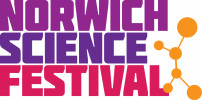© Pint of Science, 2024. All rights reserved.
Wheat is one of the most important cereal crops for the global population, and especially so in Western cultures. But it is under threat. Increasing food demand due to a rising population and the spread of crippling diseases is making wheat a crucial crop for scientists to save. Here two crop geneticists reveal the real-world problems facing our own bread basket and case studies of what is actually being done to solve them. Pint of Science talks are accessible to all, and questions from the audience are welcomed.
Uncovering wheat’s hidden potential
Cristobel Uauy
(John Innes Centre)
Wheat is part of our culture and we depend on it every day: today each one of us will eat 50 wheat plants! However, to meet demands we need to produce more wheat over the next 50 years than that produced since the start of civilizations. Urgent action is thus required to produce enough nutritious food for a growing population in a sustainable manner. We need to do better, and fast. Recent advances in genomics provide a new opportunity to use science-based solutions to address the food security problem. I’ll describe how we are using new technologies to uncover the full potential of wheat which has remained hidden to date.
Having a blast ain’t always cool: A case study of wheat blast epidemic in Bangladesh and why we should care
Joe Win
(The Sainsbury Laboratory)
Plant pathogens destroy our crops and threaten our food supply. One example is the blast fungus, the No. 1 fungal plant pathogen threatening the world food security. This blast fungus possesses a tremendous potential to mutate and adapt to new plants and cause havoc on unsuspecting crop fields. Case in point: Recent epidemic of wheat blast in Bangladesh where it has appeared for the first time in Asia since identified in Brazil in 1985. I will talk about how we used “Field Pathogenomics” approach to pin point where and how this fungus has emerged.
Map data © OpenStreetMap contributors.

